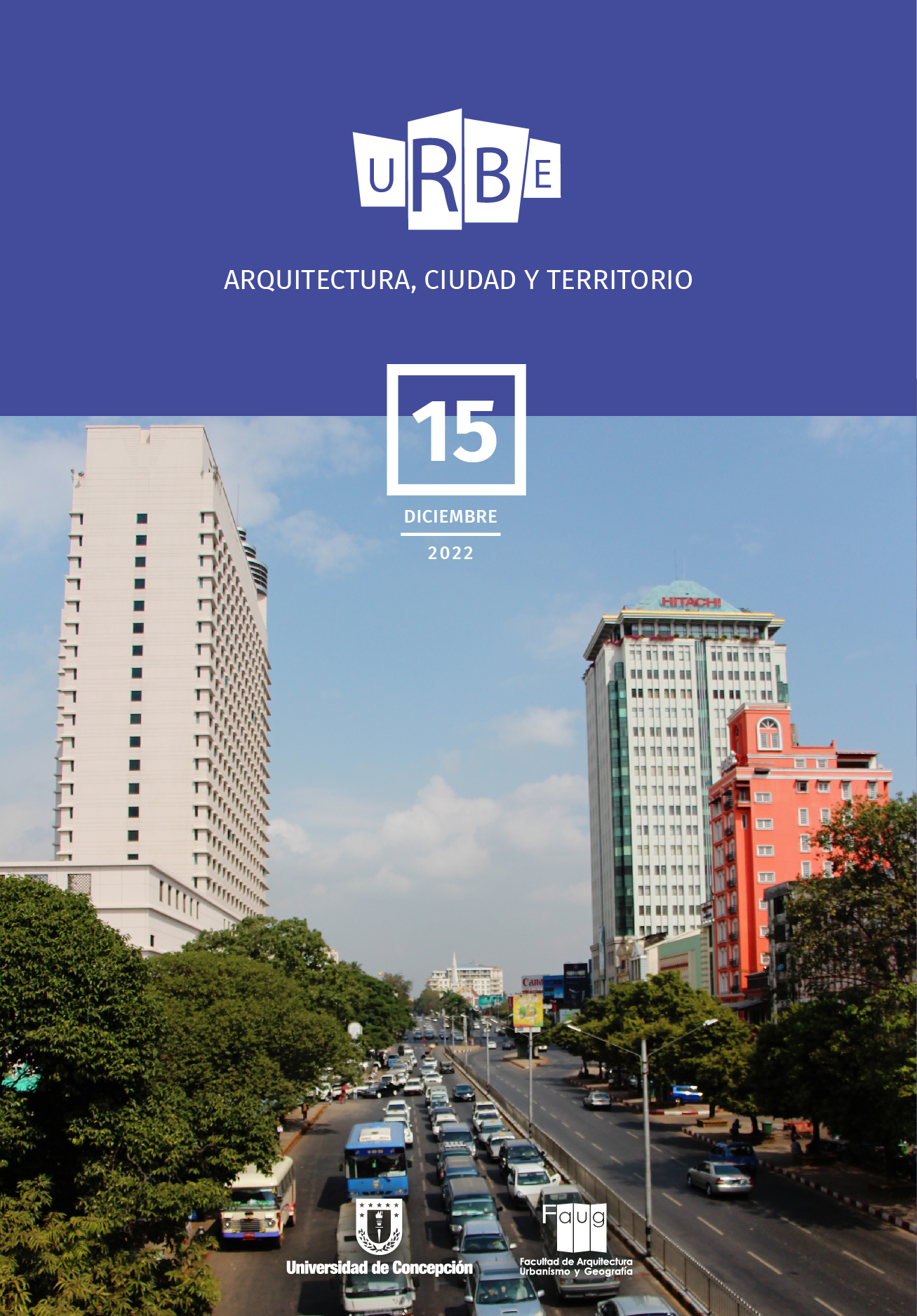Relationship between CORVI housing project designs and conviviality between residents: Analysis of the Blanco renovation, Talcahuano
DOI:
https://doi.org/10.29393/UR15-4RDCS10004Keywords:
Social housing project design, Approaches of CORVI, Remodelación Blanco, Social and urban integrationAbstract
In Chile, although the policy of the Ministry of Housing and Urban Planning for financing social housing has been considered a success, having facilitated the construction of a large number of social housing units in the country, questions arise regarding the quality of the urban space that is built in these social housing projects. The following document presents an investigation that sought to analyze the relationship between the design of a housing complex carried out by CORVI in the urban center of Talcahuano and conviviality within the project. The results of the planimetric analysis of the project and of a survey applied to the residents indicate ways in which the design facilitates conviviality and participation in social organizations at the same time the project helps consolidate the center of the municipality where it is located. The study acknowledges the value of urban design strategies implemented by CORVI, and concludes by suggesting the importance of including similar strategies in current discussions of housing policy in Chile.
Downloads
References
Aguirre, B., & Rabí, S. (2009). La trayectoria espacial de la Corporación de la Vivienda (CORVI). Diseño Urbano y Paisaje, 6(18), 2009.
Aguirre, B., & Rabi, S. (1998). Trayectoria institucional de la CORVI. Centro de Estudios de la Vivienda (CEDVI), Facultad de Arquitectura y Bellas Artes-Universidad Central, Santiago.
Araneda, H. (2020). Índice de integración social y urbana. Indicadores para medir los instrumentos aplicativos de la política de vivienda social en Chile (Tesis magister, Universidad Andrés Bello).
Azócar, G., Pérez, L., Sanhueza, R. & Alcaíno, I. (2010). Desarrollo urbano y segregación socioespacial en el área metropolitana de Concepción, Chile. Tendencias y perspectivas. En: E. Aliste, A. Almendras, L. Pérez y R. Hidalgo (Eds.), Concepción Metropolitano: evolución y desafíos. Pontificia Universidad Católica-Universidad de Concepción Sello Editorial.
Bustos-Peñafiel, M. A. (2022). La integralidad como nuevo desafío para la planificación y la gestión urbana: revisión de enfoques, aproximaciones y herramientas de intervención territorial. Ciudad y Territorio Estudios Territoriales, 54(211), 161–180.
Bustos-Peñafiel, M. (2021). El proyecto residencial colectivo en Chile. Formación y evolución de una política habitacional productiva centrada en la noción de copropiedad. Revista de Geografía Norte Grande, (78), 215-236.
Bustos-Peñafiel, M. A. (2020). Desafíos para enfrentar el deterioro de una producción cuantitativa. Vivienda social en copropiedad en Chile. Bitácora Urbano Territorial, 30(3), 247-261.
Fuentes, P. & Pérez, L. (2012). Formación del Concepción metropolitano a través de grandes conjuntos residenciales. Aportaciones del urbanismo moderno. Atenea (Concepción), (505), 33-78.
Gurovich, A. (2000). Conflictos y negociaciones: la Planificación Urbana en el desarrollo del Gran Santiago. Revista de Urbanismo, (2), 1-39.
Ministerio de Vivienda y Urbanismo (MINVU). (2006). Política habitacional de mejoramiento de la calidad e integración social. Política habitacional. MINVU.
Ministerio de Vivienda y Urbanismo (MINVU). (1984). Memoria Anual 1984. MINVU.
Ólguin, R. (2015). Clases medias, EMPART y desarrollo urbano. El caso de Villa Frei 1968-2014. Diseño Urbano & Paisaje, 12(29).
Raposo, A. (2009). Ethos social y proyectos sociales. Dimensiones del paradigma CORVI. Diseño Urbano & Paisaje, 6(18), 7.
Raposo, A. (2006). El paradigma de la CORVI en la arquitectura habitacional chilena. DU & P: revista de diseño urbano y paisaje, 3(10), 2.
Raposo, A. (1999). La vivienda social de la CORVI: un otro patrimonio. Revista INVI, 14(37), 41-73.
Rodríguez, A. y Sugranyes, A. (2005). Los con techo: Un desafío para la política de vivienda social. Ediciones SUR.
Rodríguez, A. y Sugranyes, A. (2004). El problema de vivienda de los “con techo”. EURE, 30 (91).
Riquelmo, Ó. (2020). Una historia del fordismo urbano entre los gobiernos de Eduardo Frei, Salvador Allende y Augusto Pinochet. La transformación de Maipú en una ciudad satélite semi-industrial a través de la CORVI (1965-1976). Diseño Urbano & Paisaje, (37), 29-46.
Vergara, J. E., Álvarez, D., Asenjo, D., & Dintrans, D. (2021). Practicidad y comunicación de lo técnico en las tipologías de vivienda CORVI. Revista INVI, 36(103), 323-348.
Published
How to Cite
Issue
Section
Copyright (c) 2022 Catalina Alejandra Sobarzo Aguayo

This work is licensed under a Creative Commons Attribution 4.0 International License.
Revista URBE. Arquitectura, Ciudad y Territorio tiene licencia de Creative Commons Attribution 4.0 International (CC BY 4.0) y debe citarse correctamente.









